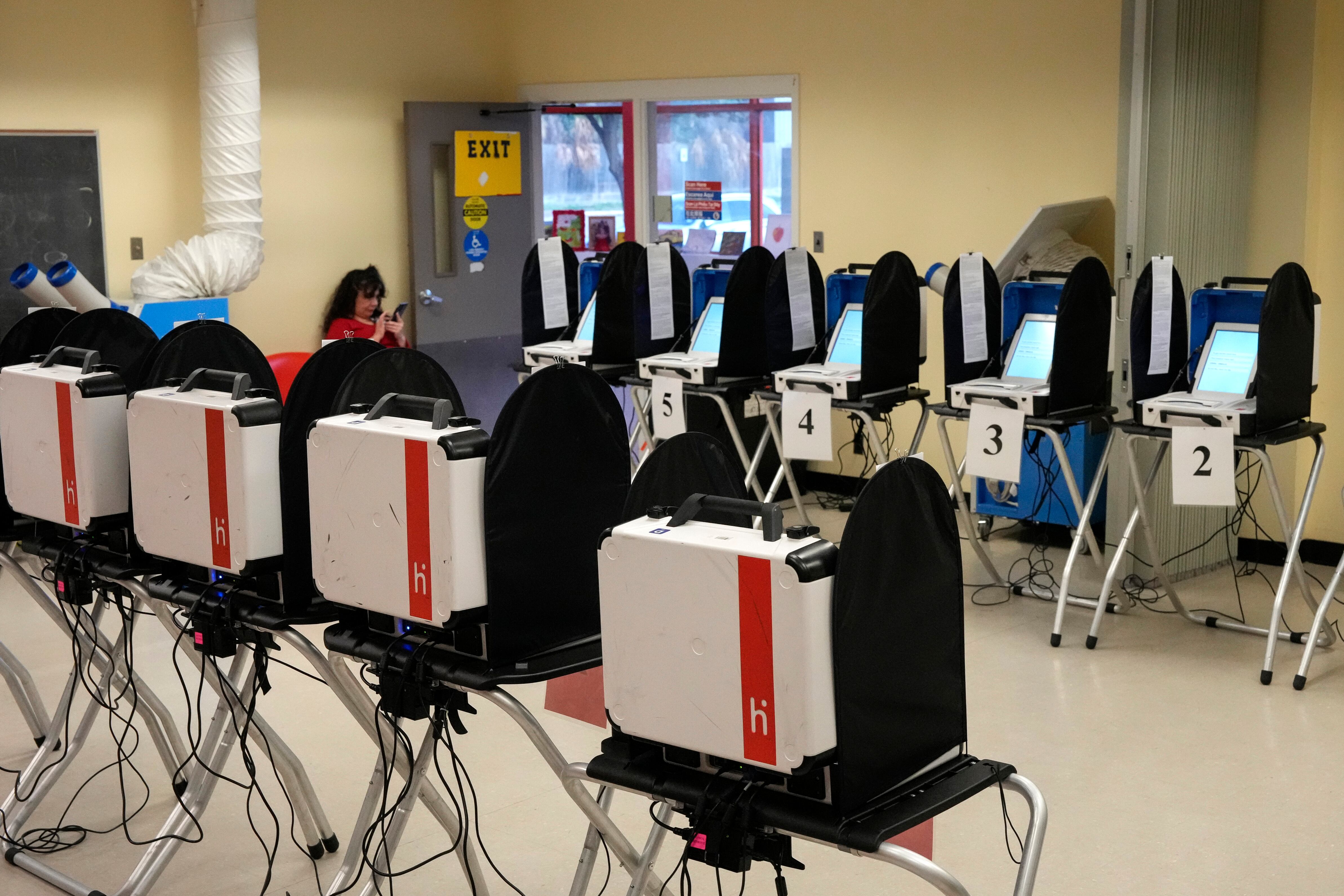Votebeat is a nonprofit news organization reporting on voting access and election administration across the U.S. Sign up for Votebeat Texas’ free newsletter here.
Soon after polls close at 7 p.m. on Election Day, election officials begin to post early voting totals that will give Texans their first glimpse of results. But knowing the actual outcome of the election could take much longer, as election officials follow a long list of procedures to ensure your vote is counted accurately.
In large counties such as Harris, Dallas, Tarrant, and Collin, where election workers and officials will be coordinating the counting of Election Day ballots coming in from hundreds of voting locations, results are likely to be particularly slow. But it’s not for a lack of effort by election workers often working past midnight to meet the state’s 24-hour deadline.
Securely transporting, counting, and verifying tens of thousands ballots just takes time, experts said.
“Because of the checks and balances, because of the chain of custody, because of the record keeping and bookkeeping, that all takes time after the voters are done voting,” said Tammy Patrick, election administration expert and chief program officer at the National Association of Election Officials. “Then the workers have to secure everything. They have to finish all their paperwork, and then they have to get those results in to the county official.”
Meeting those requirements can be less complicated, and faster, in smaller counties. Here’s what that process will look like in some of Texas’ largest counties.
It’s 7 p.m. on Election Day, and polls are closed. What’s next?
Voters can expect counties to begin reporting early-voting results shortly after 7 p.m. This batch of results includes early-voting ballots and mail ballots received up to that point.
In counties with a population of more than 100,000, election officials are allowed to begin counting received mail-in ballots after polls close on the last day of early voting, to get a head start on reporting results. Smaller counties may begin that process on the morning of Election Day.
Early voting typically accounts for a large percentage of the results, since most Texans vote early. In the 2020 presidential election, 88% of votes in Harris County were reported in the first batch of results released at 7 p.m., said Rosio Torres-Segura, a spokesperson for the Harris County Clerk’s office. Torres-Segura said that this year, the county expects to see a similar percentage vote early.
So what about results from Election Day voting?
Polling places on Election Day are open until 7 p.m., but some polling locations could still have people waiting in line at closing time.
By law, those voters must get the opportunity to cast their ballots. Some voters have had to wait several hours to cast their ballots on Election Day in previous years, such as during the 2020 primaries, when the lines extended for hours after closing time.
This can delay the reporting of election results.
Once all ballots are cast at a voting location, polling location supervisors have a series of security measures to follow. Before leaving the polling location, they must fill out paperwork with details about the number of ballots counted by ballot scanning machines and the number of voters who checked in to vote. They must also pack up the ballots and other items and transport them back to the county’s central counting station — the place where ballots are tallied, vote totals are determined, and unofficial results are generated on election night.
All of this is an important part of the process. Polling location supervisors must pay close attention to detail and ensure everything — ballots, paperwork, and equipment — is accounted for before it’s delivered to the central counting station. In Collin County, this step can take poll workers up to an hour to complete after they have processed all voters and polls have closed.
“What you’re talking about here is election integrity. You have to ensure that you have a good chain of custody, meaning your documents show every single aspect of what’s happened at that polling site,” said Bruce Sherbet, Collin County election administrator.
In large counties, getting ballots and equipment back to the county’s central counting station can take time and delay the election results. Giant Harris County will have election results coming in from 700 polling locations. One of them, in Baytown, east of Houston, is 40 minutes away from county election headquarters.
To speed up the process, Harris and other large counties will have designated substations around the county where election workers can drop off their materials to get the vote counting started.
Tarrant County, which will operate 349 polling locations on Election Day, will have seven sites where election workers can deliver materials, said Clint Ludwig, the county’s election administrator. Harris County officials said they’ll have six sites across the county.
Once everything is turned in, election administrators then review and verify the information from each polling site. Counties must post the comparison of the number of voters and the number of voted ballots on their election websites.
How are votes tallied to produce results in statewide races?
After results from polling locations make their way to the counties’ central counting stations, election officials submit those to the state. Election workers manually enter totals for every race into the statewide election management system, known as TEAM. The Secretary of State’s office then reviews county reports to ensure the information is correct before unofficial election night results are finalized.
If there are any discrepancies between what is posted on a county website and the state’s system, the Secretary of State’s office checks with local officials entering the data to ensure the correct information is included in the state’s unofficial reporting of election night results.
By state law, Election Day totals must be submitted to the state within 24 hours after polls close.
Once vote counting has begun, it cannot stop until it’s done. In large counties, election officials will work in shifts in case counting extends into the early morning hours.
Why are election night results ‘unofficial’?
The election night results are unofficial because counties still must account for late-arriving mail-in ballots, ballots from military or overseas voters, and provisional ballots. The deadlines for receiving different kinds of ballots vary, but all must be reviewed and counted or rejected by Nov. 18, according to the election law calendar.
Once all eligible ballots have been counted, the county commissioners court can conduct the local canvass by reviewing records and finalizing the tally of votes. This must be completed by Nov. 19.
A statewide canvass, in which the governor certifies the results with the secretary of state as a witness, must take place by Dec. 9. At that point, statewide results become official and final.
María Méndez is a service and engagement reporter for The Texas Tribune. Contact María at mmendez@texastribune.org
Natalia Contreras covers election administration and voting access for Votebeat in partnership with the Texas Tribune. Contact Natalia at ncontreras@votebeat.org






